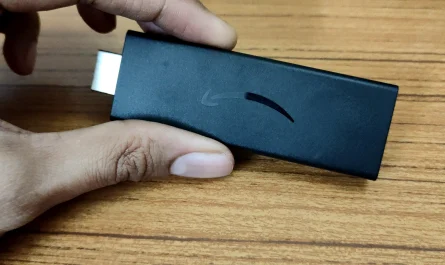I recently picked up the TCL C6K Mini-LED TV during the Flipkart BBD Sale—a choice I made after extensive research, initially favoring the Sony Bravia 2. One month in, I can confidently say I made the right decision. At a price of around ₹38,700 for my model, this TV delivers a technology stack that is simply superior to its direct competitors in the budget segment. This is my honest, personal one-month update breaking down the major pros and crucial cons of this mini-LED powerhouse.
📌 Check current prices
- TCL C6K 55 inches Mini-LED 👉 https://amzn.to/4369SPd
- TCL C6K 65 inches Mini-LED 👉 https://amzn.to/4odeE5U
- TCL C6K 75 inches Mini-LED 👉 https://amzn.to/43amG79
- TCL Q6C 55 inches Mini-LED 👉 https://amzn.to/4nY0Tru
- TCL Q6C 65 inches Mini-LED 👉 https://amzn.to/4q82JaK
- TCL Q6C 75 inches Mini-LED 👉 https://amzn.to/4q2leh3
The Pros: Where the TCL C6K Shines
1. Unbeatable Price-to-Performance Value (Mini-LED at Budget)
The C6K’s core strength is its price. Listed around ₹46,000, it drops below ₹45,000 with offers, making it the most accessible Mini-LED TV on the market. This technology advantage, typically reserved for premium sets, is a game-changer at this price point.
2. The Power of Mini-LED Technology
The Mini-LED backlight, compared to the direct lit LED (like in the Sony Bravia 2), offers a massive leap in picture quality and longevity:
- Superior Contrast: Thousands of smaller LEDs allow for precise, independent control over screen sections (180 dimming zones on this model). This means when a section of the screen is completely dark, the backlight is switched off, delivering truly deep, black levels (not gray).
- Dynamic Range: The ability to independently control brightness zones dramatically increases the dynamic range, making bright scenes pop while preserving detail in the shadows.
- Reduced Blooming/Halo: TCL, a pioneer in Mini-LED, has successfully mitigated the common halo effect by redesigning the LEDs and adding extra lenses to focus the light.
- Enhanced Longevity: Smaller LEDs spread heat more evenly across the panel, unlike direct-lit TVs which develop hot spots. This even heat distribution extends the TV’s lifespan, especially under heavy, daily use.
3. Tested Durability and Longevity (TCL vs. Sony)
Based on intensive stress testing by sites like Rtings.com, the durability narrative around TCL is changing. The results suggest that in the budget range, many Sony models (like the X90J and X95J) failed or stopped working around the two-year mark. In comparison, TCL’s international variants (like this model) demonstrate comparable or better longevity.
⚠️ Critical Finding: Avoid Edge-Lit TVs! Independent testing confirms that Edge-Lit TVs—still sold by LG and Samsung in the budget segment—are prone to faster failure due to uneven heat distribution melting the internal diffuser. Never purchase an Edge-Lit TV.
4. Excellent Color Reproduction and Google TV OS
- QLED Colors: The TV utilizes QLED technology, providing very natural, life-like colors right out of the box with no extra saturation or recalibration needed.
- Customization for Power Users: Running on Google TV OS, the C6K offers far less restrictive customization compared to LG/Samsung’s proprietary OS. For users who watch media from personal libraries, the ability to unlock developer mode settings (like allowing any app to access all USB files) is a huge advantage.
5. Impressive Internal Specs
The TV features a respectable MediaTek Pentonic 700 CPU (a capable mid-ranger), 3GB RAM, and 32GB of internal storage. TCL’s smart use of storage as a 10GB caching space essentially gives the TV 12GB of effective RAM, significantly speeding up app loading times and keeping big apps (Netflix, Hotstar) running in memory.
The Cons: Important Issues to Consider
1. Low HDR Peak Brightness
This is the main drawback: the C6K’s peak HDR brightness is 600 nits. While great for non-HDR content, high-bitrate content (Dolby Vision, HDR10+) ideally requires a 1000-nit panel. This means HDR scenes will appear dimmer than on a flagship TV, a necessary compromise for the budget price.
2. Motion Handling (Judder)
By default, the motion processing causes noticeable judder and motion blur.
- The Fix: This can be corrected by going into the settings and manually enabling and setting “Motion Clarity” to custom level 9. Check our detailed settings guide.
- The Limitation: This fix often only works for the TV’s in-built apps, and not for external devices like a connected laptop.
3. Poor SD Content Upscaling
The TV does a poor job upscaling low-resolution (SD) content, resulting in significant noise and pixelation. While 4K and FHD content look stunning, watching older, lower-quality videos is a let-down compared to competitors like Sony.
4. Poor After-Sales Service (Risk)
This is a serious concern. While the product quality is high, multiple customer reviews indicate that TCL’s after-sales service in India is poor and very slow. Customers report delays of over a month for replacement/repair, and a lack of responsiveness. You must be prepared to be persistent if your TV requires a warranty claim.
5. Restricted Viewing Angle (HVA Panel)
The C6K uses an HVA panel, which offers great contrast but has poorer viewing angles than an IPS panel. If you view the TV from more than about 15 degrees off-center, you will notice a reduction in brightness and color fidelity.
Final Verdict: The Best Budget Mini-LED TV?
If your budget is around ₹45,000 (or up to ₹65,000 for the 65-inch version during sale) and your priority is getting the best picture quality and longest lifespan for your money, the TCL C6K Mini-LED TV is the clear winner in 2025. The Mini-LED technology, superior internal specs, and power-user friendly OS outweigh the cons. Just be aware of the low-end upscaling and the potential headache of the after-sales service.
If you found this review helpful, please consider supporting us by joining our YouTube community to gain early access to all our latest troubleshooting guides and other members-only perks. Thanks for reading, and happy viewing with your TCL C6/Q6C!




